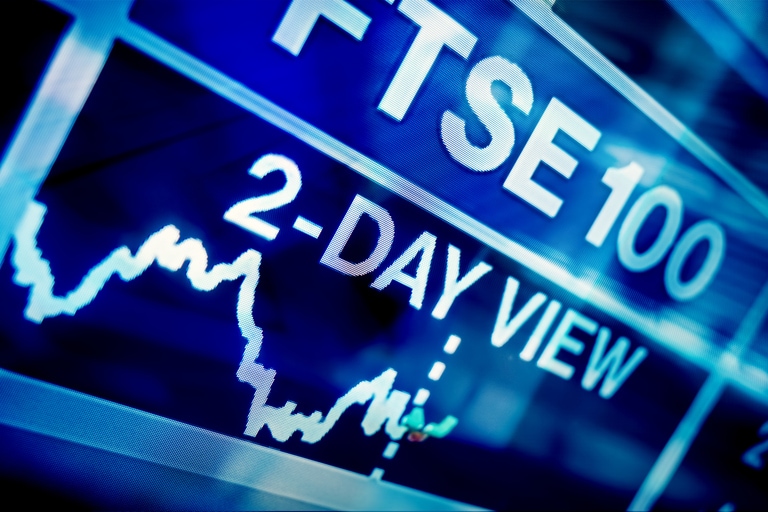On any ordinary measure, Friday’s US non-farm payrolls report was a very solid number, with 263,000 jobs added in November, and an upward adjustment to October at 284,000, however it was the wages numbers that provided a lot of the shock value, sending yields and the US dollar sharply higher initially. Not only did wage growth jump sharply to 5.1% in November, but October was revised higher to 4.9% from 4.7%, in a manner that is unlikely to assuage Fed officials' concerns over a wage price spiral.
Nonetheless the rebound in yields, as well as the US dollar, which acted as a drag on markets heading into the European close, proved to be somewhat fleeting, with US markets managing to recover from their lows of the day, and both the US dollar and yields ending a poor week off their lows. This would suggest that investors believe, probably correctly, that the numbers on Friday won’t change the calculus around a 50bps Fed rate hike next week, that is still largely expected, but it will probably mean that the size of any January hike is still up for grabs.
The inability of the US dollar, or for that matter US yields, in the face of this upside surprise, does suggest that the US dollar may well have peaked, and that the die may well be cast as to where the greenback goes next in terms of further weakness.
This is likely to be good news for stock markets in the short term, as is the news over the weekend that more cities in China are relaxing covid rules despite rising infections. Shanghai joined the likes of Beijing and Shenzhen in easing restrictions, announcing the scrapping of PCR testing requirements to enter outdoor public spaces like parks, as well as riding on public transport.
The Hang Seng was the best performing stock market last week, rising almost 10% on the week, and has got off to a flier this week as well, on the virus rule relaxations over the weekend. This continued rebound in Chinese markets alongside the pullback from the lows of the day in the US on Friday doesn’t look as if it will feed into European markets this morning with a flat open expected, with the November services PMI numbers the main focus today.
The recent flash PMIs from the UK, France, Germany, and the US all pointed to much more muted activity in the services sector during November as rising prices in Europe constrained demand. The slide in US services sector activity was slightly more surprising given that headline inflation has been slowing in recent months, however that has come on the back of a much more aggressive central bank and a sharply slowing housing market.
Today’s final services PMI numbers are expected to highlight the challenges facing central banks when tightening monetary policy into the teeth of a squeeze on consumer incomes, with expectations for Spain, Italy, France and Germany all set to remain in contraction territory of 49.9, 47.5, 49.4, and 46.4 respectively.
UK services sector activity is expected to come in at 48.8, while in the US its services sector activity numbers have continued to be mixed. Weak on the services PMI at 46.1, however the ISM services numbers have consistently been stronger. These came in at 54.5 in October, and are expected to slip to 53.3 in November, but we should also pay attention to the internals and the prices paid data, which in the manufacturing sector have slumped sharply. Will it follow suit in November?
OPEC+ also agreed to maintain its existing policy on oil production over the weekend, despite concerns they might have looked at another cut due to recent weakness in the oil price, with the slow relaxing of Covid rules in China perhaps playing a part in that decision.
It's also a big week for the Australian and Canadian dollar this week, with the latest interest rate decisions from both, starting with the RBA tomorrow. Both currencies struggled against the US dollar last week, with the CAD losing ground while the Aussie only rallied due to optimism over a China reopening.
In October the RBA only hiked by 25bps which was a little bit of a surprise, given current high levels of inflation. Their caution appears to be nervousness around the housing market, and possible weakness there. If this caution remains there is a risk of another downside surprise, given that markets are expecting another 25bps rate hike. Could we see another surprise and a pause?
EUR/USD – the break above 1.0400 area and the 200-day SMA looks set to see a move up to the June peaks at 1.0620, which is also the 38.2% retracement of the down move from 1.2350 to 0.9535. A move below 1.0420 targets 1.0320.
GBP/USD – has broken above resistance at the 1.2300 area, and 50% retracement from the 1.4250 highs to the recent lows at 1.0342, potentially opening up a move towards 1.2500, with 1.2760 the 61.8% Fibonacci retracement level. Support comes in at the 1.2130 area and the 200-day SMA.
EUR/GBP – finding support just above the 200-day SMA and the 0.8540 area. This could act as support in the short term, with resistance now at the 0.8675 area. Below 0.8530 targets 0.8480.
USD/JPY – slipped below the 200-day SMA at 134.40, last week, opening up a retest of the 131.60 area and August lows. Resistance now at the 137.50 area.
CMC Markets erbjuder sin tjänst som ”execution only”. Detta material (antingen uttryckt eller inte) är endast för allmän information och tar inte hänsyn till dina personliga omständigheter eller mål. Ingenting i detta material är (eller bör anses vara) finansiella, investeringar eller andra råd som beroende bör läggas på. Inget yttrande i materialet utgör en rekommendation från CMC Markets eller författaren om en viss investering, säkerhet, transaktion eller investeringsstrategi. Detta innehåll har inte skapats i enlighet med de regler som finns för oberoende investeringsrådgivning. Även om vi inte uttryckligen hindras från att handla innan vi har tillhandhållit detta innehåll försöker vi inte dra nytta av det innan det sprids.






